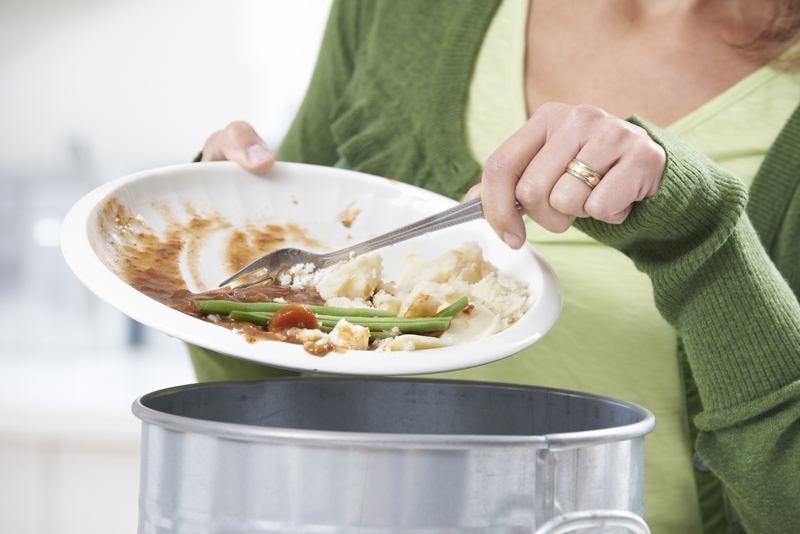Practical Methods to Shrink Your Home's Waste
Reducing household waste has never been more critical for the environment or your budget. By integrating easy and effective waste-reduction strategies into your daily life, you can make a significant impact on both the planet and your well-being. This comprehensive guide explores practical methods to decrease your home's waste, offering implementable solutions and expert tips to help you transform your approach to rubbish and sustainability.

Why Minimize Household Waste? The Environmental and Personal Benefits
- Environmental Sustainability: Landfills are overflowing, and waste incineration releases harmful toxins into our atmosphere. Cutting down on home waste directly reduces pollution and conserves natural resources.
- Financial Savings: By minimizing unnecessary purchases and reusing items, you can save substantial amounts of money each month.
- Healthier Living: Less clutter and chemical-laden disposables mean a cleaner, healthier home environment for your family.
Now, let's explore the most practical methods to shrink your home's waste, focusing on simple changes with lasting results.
1. Adopt the 5 R's: Refuse, Reduce, Reuse, Recycle, Rot
Refuse: Say No to Unnecessary Items
- Decline single-use plastics like straws, cutlery, or shopping bags whenever possible. Every time you say "no," you reduce the demand for these wasteful products.
- Opt out of junk mail: Register with services to cut down on unsolicited mail and catalogs cluttering your home.
- Choose minimal packaging: Seek products with less or no packaging, especially when shopping for groceries.
Reduce: Bring Less Home
- Buy in bulk to avoid excess packaging, especially for pantry staples like rice, beans, and grains.
- Plan meals and make shopping lists to avoid impulsive purchases that often end up as waste.
- Minimize digital and physical "stuff" by borrowing, renting, or sharing rather than owning, especially for tools and seldom-used household goods.
Reuse: Extend Product Lifespan
- Switch to reusable items: Invest in cloth shopping bags, stainless steel water bottles, glass food containers, and beeswax wraps.
- Creative upcycling: Repurpose jars, tins, or old clothing into new items like plant pots, storage solutions, or cleaning rags.
- Repair before replacing: Learn basic mending or fix household items instead of automatically buying new ones.
Recycle: Sort and Dispose Responsibly
- Know your local recycling rules: Many materials are recyclable only if cleaned properly and sorted correctly. Check local guidelines for plastics, glass, and electronics.
- Participate in take-back schemes: Many retailers have recycling programs for electronics, batteries, clothing, and even light bulbs.
Rot: Compost Organic Waste
- Start a compost bin: Transform food scraps, coffee grounds, eggshells, and yard waste into nutrient-rich compost for your garden.
- Learn what to compost: Not all organic matter is compostable at home; avoid adding meat, dairy, and oily foods which can attract pests.
- Vermicomposting: A great option for apartment-dwellers, using worms to break down food waste efficiently and odor-free.
2. Practical Everyday Tips to Reduce Home Waste
Reimagine Your Kitchen Habits
- Use reusable kitchenware: Swap paper towels for washable cloths and use silicone baking mats instead of parchment paper.
- Store food properly to prevent spoilage: Use airtight containers, keep your fridge organized, and learn the best way to store produce.
- Eat leftovers: Plan weekly "leftover nights" and get creative with transforming yesterday's meals into new dishes.
Shopping Smart: Reduce Packaging and Food Waste
- Bring your own containers and produce bags: Many stores allow you to use your containers in the bulk and deli sections. This simple shift can drastically cut down your plastic and disposable waste.
- Choose loose produce: Purchase fruits and vegetables without individual packaging.
- Shop local and seasonal: Local farmers markets often use less packaging, and seasonal produce typically has a smaller carbon footprint.
Eco-Friendly Cleaning Routines
- DIY cleaning products: Use simple ingredients like vinegar, baking soda, and lemon to create powerful, low-waste cleaners.
- Refill options: Many stores now offer refills for dish soap, laundry detergent, and household cleaners--bring your own bottle!
Bathroom Waste Reduction
- Opt for bar soaps: Bar soap has minimal packaging compared to liquid soap.
- Swap disposable razors for safety razors: These have recyclable blades and last for years.
- Choose reusable items: Replace cotton pads and swabs with washable alternatives, and consider menstrual cups or reusable pads.
Mindful Wardrobe Management
- Buy less, choose better: Prioritize quality over quantity and focus on timeless pieces that last longer.
- Host clothing swaps: Exchange clothes with friends and family to refresh your wardrobe without buying new.
- Support circular fashion: Shop from or donate to secondhand and consignment stores, promoting a reuse culture.
3. Composting and Food Waste Solutions
Why Food Waste Is a Problem
Food waste accounts for a significant portion of household trash. When organic matter goes to landfill, it decomposes anaerobically, producing methane--a greenhouse gas far more potent than carbon dioxide. *Tackling food waste is one of the easiest and most impactful strategies to shrink your home's waste.*
Effective Food Waste Reduction Steps
- Plan meals and shop accordingly: Avoid overbuying and only purchase what you can feasibly use.
- Understand expiration dates: Most "sell by" and "best before" dates are guidelines, not hard deadlines--trust your senses before throwing food away.
- Preserve excess food: Freeze, pickle, or dehydrate surplus fruits and vegetables to extend their shelf life.
Composting At Home: Getting Started
- Choose a composting method: Bin, tumbler, or worm composter? Pick what fits your space and lifestyle best.
- Balance green and brown materials: Mix nitrogen-rich (greens) with carbon-rich (browns) to ensure efficient composting and minimize odors.
- Use finished compost: Enrich your garden soil or offer it to community gardens.
4. Responsible Recycling and Upcycling
Common Mistakes in Household Recycling
- Wish-cycling: Placing non-recyclables in the recycling bin can contaminate batches and send more to landfill. Learn exactly what your municipality accepts.
- Neglecting to wash items: Rinse food containers before recycling to prevent contamination.
- Improper sorting: Separate glass by color and flatten cardboard boxes as recommended by your local facility.
Clever Upcycling Ideas for Everyday Items
- Tin cans: Decorate and use as planters, pencil holders, or candle molds.
- Glass jars: Store pantry items, pack lunches, or make homemade preserves.
- Old t-shirts: Cut into cleaning rags or braid into pet toys.
Upcycling not only reduces home waste but can add character and personalization to your living space.
5. Reducing Waste Through Smart Purchasing Decisions
- Evaluate needs vs. wants: Ask yourself if you truly need a product before purchasing.
- Avoid impulse buys: Take a 24-hour pause before making non-essential purchases.
- Choose durable and repairable goods: Opt for items designed to last or that come with warranties.
- Support local businesses: Local goods often require less packaging and transportation, reducing both physical waste and carbon emissions.
- Research manufacturer take-back programs: Select brands that recycle old products.
6. Involving Your Household in Waste Reduction
Make Waste Reduction a Family Affair
- Lead by example: Children and housemates are more likely to engage if they see consistent efforts and positive results.
- Set up convenient systems: Keep recycling and compost bins accessible and well-labeled.
- Make it fun: Turn waste sorting and upcycling projects into family games or challenges.

7. Digital Decluttering and Reducing E-Waste
- Consolidate devices: Only purchase electronics with features you truly use.
- Repair and upgrade: Replace parts rather than entire devices when possible.
- Recycle responsibly: Utilize e-waste collection programs for old phones, laptops, and batteries.
- Cloud storage: Store documents and photos digitally to reduce printing needs.
Conclusion: A More Sustainable Home Starts With Simple Steps
Making a conscious effort to shrink your home's waste can transform your environmental footprint, slash expenses, and foster a healthier living environment. Whether you start by swapping single-use products for reusables, ramping up your composting game, or simply refusing extra packaging, every action counts.
Remember: Shrinking household waste is an ongoing journey, but each mindful step benefits your community and our shared planet. Encourage your family and friends to join you, and revel in the rewards of a cleaner, greener home. Together, we can pave the way toward a zero-waste future--one practical method at a time!
- Start today--choose just one tip from this guide and make it a habit!
- Stay informed and keep evolving your waste-reduction arsenal with new ideas and innovations.
- Share your successes and challenges with your community to inspire others.
Shrink your home's waste and make every day Earth Day!